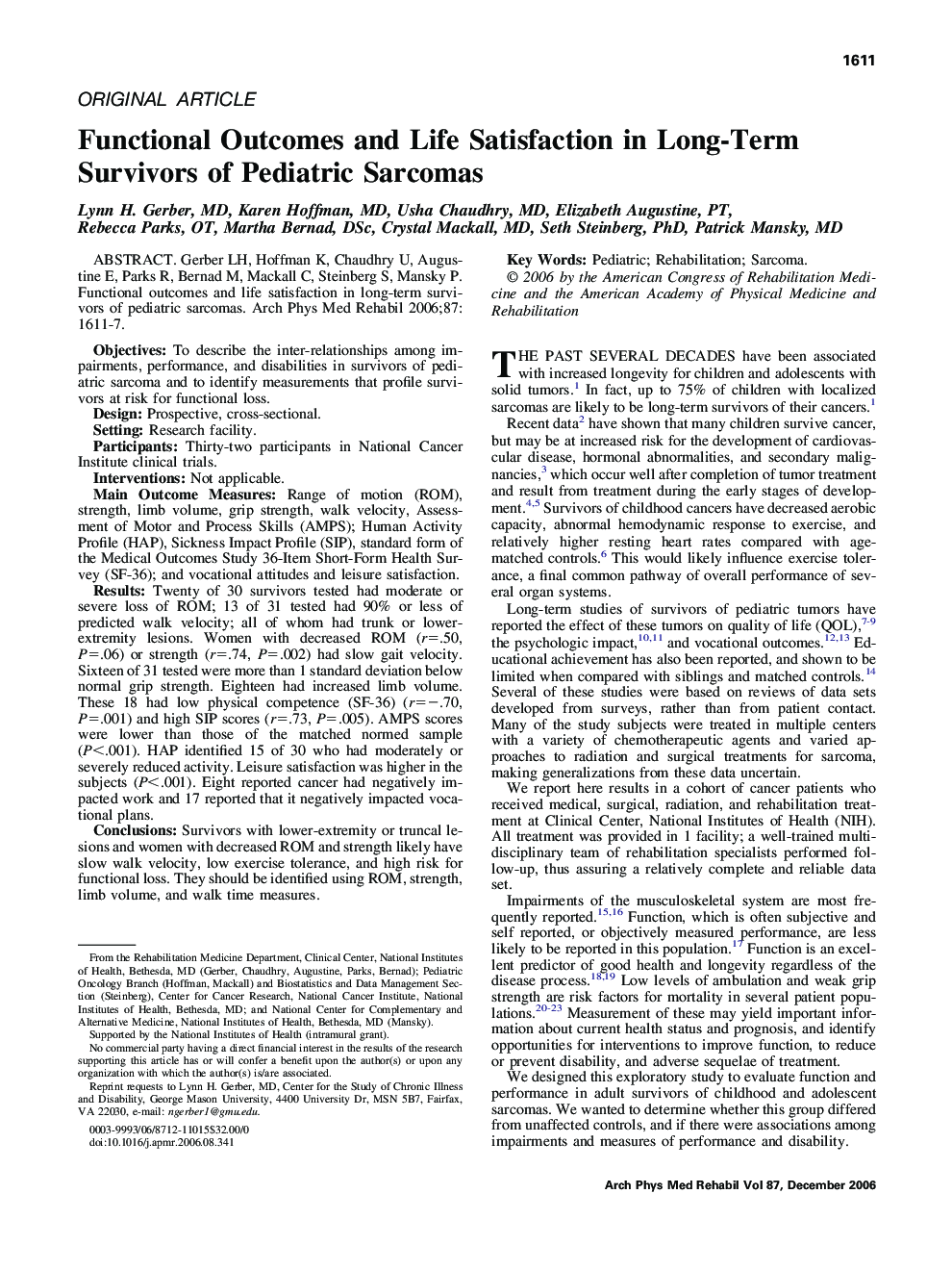| کد مقاله | کد نشریه | سال انتشار | مقاله انگلیسی | نسخه تمام متن |
|---|---|---|---|---|
| 3452405 | 1595799 | 2006 | 7 صفحه PDF | دانلود رایگان |

Gerber LH, Hoffman K, Chaudhry U, Augustine E, Parks R, Bernad M, Mackall C, Steinberg S, Mansky P. Functional outcomes and life satisfaction in long-term survivors of pediatric sarcomas.ObjectivesTo describe the inter-relationships among impairments, performance, and disabilities in survivors of pediatric sarcoma and to identify measurements that profile survivors at risk for functional loss.DesignProspective, cross-sectional.SettingResearch facility.ParticipantsThirty-two participants in National Cancer Institute clinical trials.InterventionsNot applicable.Main Outcome MeasuresRange of motion (ROM), strength, limb volume, grip strength, walk velocity, Assessment of Motor and Process Skills (AMPS); Human Activity Profile (HAP), Sickness Impact Profile (SIP), standard form of the Medical Outcomes Study 36-Item Short-Form Health Survey (SF-36); and vocational attitudes and leisure satisfaction.ResultsTwenty of 30 survivors tested had moderate or severe loss of ROM; 13 of 31 tested had 90% or less of predicted walk velocity; all of whom had trunk or lower-extremity lesions. Women with decreased ROM (r=.50, P=.06) or strength (r=.74, P=.002) had slow gait velocity. Sixteen of 31 tested were more than 1 standard deviation below normal grip strength. Eighteen had increased limb volume. These 18 had low physical competence (SF-36) (r=−.70, P=.001) and high SIP scores (r=.73, P=.005). AMPS scores were lower than those of the matched normed sample (P<.001). HAP identified 15 of 30 who had moderately or severely reduced activity. Leisure satisfaction was higher in the subjects (P<.001). Eight reported cancer had negatively impacted work and 17 reported that it negatively impacted vocational plans.ConclusionsSurvivors with lower-extremity or truncal lesions and women with decreased ROM and strength likely have slow walk velocity, low exercise tolerance, and high risk for functional loss. They should be identified using ROM, strength, limb volume, and walk time measures.
Journal: Archives of Physical Medicine and Rehabilitation - Volume 87, Issue 12, December 2006, Pages 1611–1617